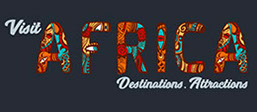+256 760 038002
info@visitafrica.site
Visit Zimbabwe, a must visit Africa destination, distinct for its large number of medieval era great city ruins, the famous Victoria falls and diverse wildlife.
Zimbabwe is a landlocked country in southern Africa known for its dramatic landscape and diverse wildlife, much of it within parks, reserves and safari areas. On the Zambezi River, The World Famous Victoria Falls make a thundering 108m drop into narrow Batoka Gorge, where there’s white-water rafting and bungee-jumping. Downstream are Matusadona and Mana Pools national parks, home to hippos, rhinos and bird-life, and the Great Zimbabwe ruins
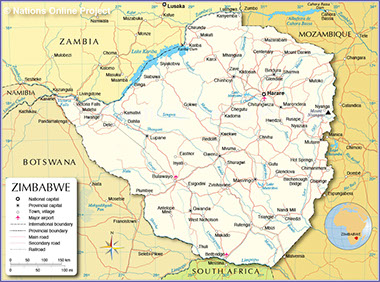
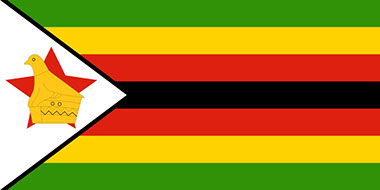
About Zimbabwe
A Visit to Zimbabwe will take you through an attractive patchwork of landscapes, from highveld, balancing boulders and flaming msasa trees, to laidback towns, lush mountains and lifeblood rivers. Here you can spot the Big Five (leopard, lion, rhino, elephant and buffalo) in its national parks, discover World Heritage listed archaeological sites and stand in awe of one of the natural wonders of the world, Victoria Falls.
Zimbabwe boasts several tourist attractions, located in almost every region of the country. Before the economic changes, much of the tourism for these locations came to the Zimbabwean side but now Zambia benefits from the tourism. The Victoria Falls National Park is also a tourist attraction in this area and is one of the eight main National Parks in Zimbabwe, largest of which is Hwange National Park.
Zimbabwe is distinctive in Africa for its large number of medieval era city ruins built in a unique dry stone style. Possibly the most famous of these are the Great Zimbabwe ruins in Masvingo which survive from the Kingdom of Zimbabwe era. Other ruins include Khami Ruins, Zimbabwe, Dhlo-Dhlo and Naletale.
Geography
Zimbabwe is a landlocked country in southern Africa, lying between latitudes 15° and 23°S, and longitudes 25° and 34°E. It is bordered by South Africa to the south, Botswana to the west and southwest, Zambia to the northwest, and Mozambique to the east and northeast. Its northwest corner is roughly 150 meters from Namibia, nearly forming a four-nation quadripoint. Most of the country is elevated, consisting of a central plateau (high veld) stretching from the southwest northwards with altitudes between 1,000 and 1,600 m. The country's extreme east is mountainous, this area being known as the Eastern Highlands, with Mount Nyangani as the highest point at 2,592 m.
Zimbabwe has a tropical climate with many local variations. The southern areas are known for their heat and aridity, parts of the central plateau receive frost in winter, the Zambezi valley is also known for its extreme heat and the Eastern Highlands usually experience cool temperatures and the highest rainfall in the country. The country's rainy season generally runs from late October to March and the hot climate is moderated by increasing altitude
The Name "South Africa"
The name "South Africa" is derived from the country's geographic location at the southern tip of Africa. Upon formation, the country was named the Union of South Africa in English and Unie van Zuid-Afrika in Dutch, reflecting its origin from the unification of four formerly separate British colonies. Since 1961, the long formal name in English has been the "Republic of South Africa" and Republiek van Suid-Afrika in Afrikaans. Since 1994, the country has had an official name in each of its 11 official languages.
Mzansi, derived from the Xhosa noun umzantsi meaning "south", is a colloquial name for South Africa, while some Pan-Africanist political parties prefer the term "Azania"
Culture
Zimbabwe has many different cultures with their own beliefs and ceremonies, including the Shona, Zimbabwe's largest ethnic group. The Shona people have many sculptures and carvings which are made with the finest materials available. Shona music is also deservedly famous. Probably the best-known Shona instrument is the mbira dzavadzimu, sometimes misleadingly called the "thumb piano" by non-Africans but actually meaning "voice of the ancestors". Mbira music contains harmony and can be a kind of shifting kaleidoscope of counterpoint and lively polyrhythms. It is very tuneful, and the mbiras are often accompanied by a rattle called a hosho. Mbira music is central to Shona culture and identity and is traditionally considered a form of worship of the ancestors.
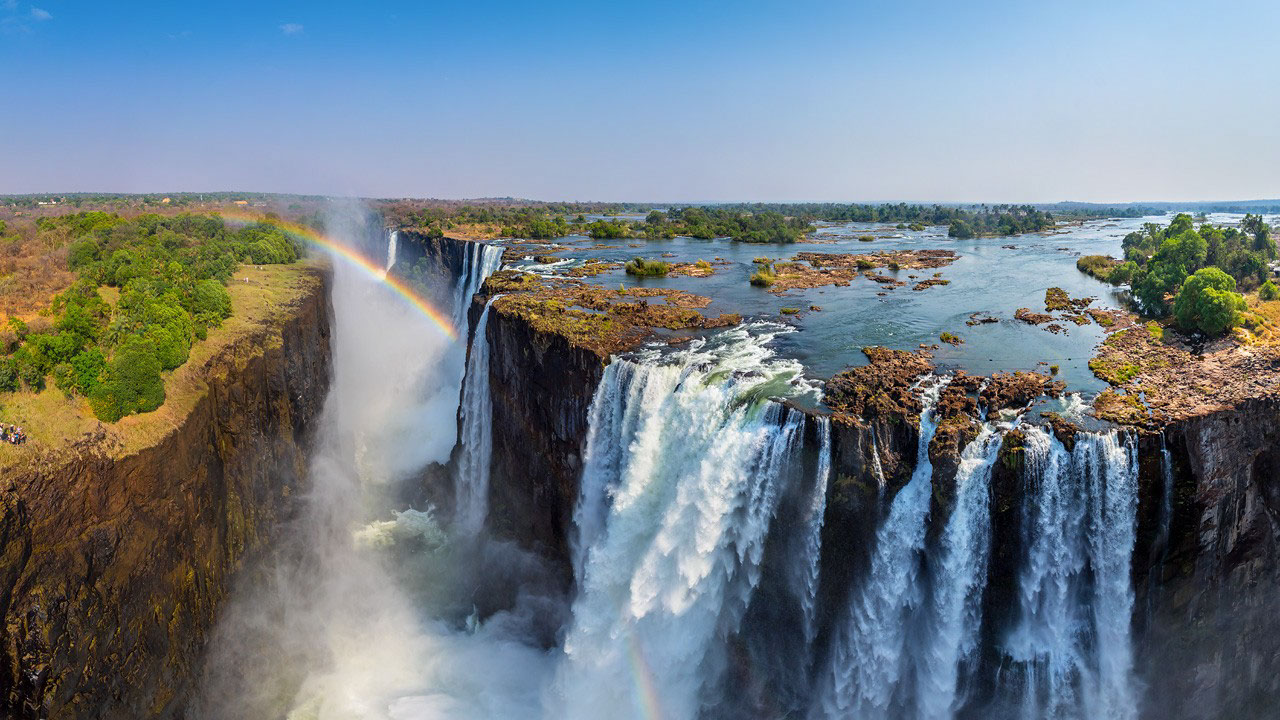
Archaeological records date human settlement of present-day Zimbabwe to at least 100,000 years age. The earliest known inhabitants were probably San people, who left behind arrowheads and cave paintings. The first Bantu-speaking farmers arrived during the Bantu expansion around 2,000 years ago.
Societies speaking proto-Shona languages first emerged in the middle Limpopo valley in the 9th century before moving on to the Zimbabwean highlands. The Zimbabwean plateau eventually became the centre of subsequent Shona states, beginning around the 10th century. Around the early 10th century, trade developed with Arab merchants on the Indian Ocean coast, helping to develop the Kingdom of Mapungubwe in the 11th century. This was the precursor to the Shona civilisations that would dominate the region during the 13th to 15th centuries, evidenced by ruins at Great Zimbabwe, near Masvingo, and by other smaller sites. The main archaeological site uses a unique dry stone architecture.
Stone cities were built in many locations in present-day Zimbabwe. The most impressive structures and the best known of these, Great Zimbabwe, were built in the 15th century, but people had been living on the site from about 400 AD. The Khami Ruins just outside Bulawayo are also a wonderful example.
The population was overwhelmingly made up of Shona speakers until the 19th century when the Nguni tribe (in 1839-40) of the Ndebele settled in what is now Matabeleland, and then in 1890, the territory came under the control of the British South Africa Company under charter from the British Government.
History of Zimbabwe
Getting In
If you are required to have a visa, don't arrive without one, as they are not issued at points of entry. If needed, you can extend your visa in South Africa. With an extension the total amount of time you are allowed to stay is 6 months.
- By Car; Zimbabwe is accessible by road from the countries that surround it. Contrary to past scenarios, the fuel situation has improved with prices now being quoted in US dollars. As fuel has to be imported from either Mozambique or South Africa, you can expect to pay more per litre than you would in most other Southern African countries.
- By Plane; Harare International Airport has a number of international flights, mainly to other African countries.
- By Bus; Regular deluxe bus services operate from Johannesburg to Harare. A number of buses also travel from Johannesburg to Bulawayo. Greyhound drives to both destinations.
- By Train; As of 2018, National Railways of Zimbabwe runs one international passenger service, a twice-weekly overnight train from Francistown, Botswana to Bulawayo. Shosholoza Meyl runs a passenger service from Johannesburg to the border city Musina, from where it's possible to cross into Zimbabwe.
- By Boat; Most of the larger cruise lines, such as Princess Cruises offer Cape Town as one of their destinations, but you can also try something different.
Getting Around
Between cities, you travel using luxury coaches like Pathfinder and Citilink. You can also get decent buses from RoadPort in Harare to other major cities including those in neighbouring countries like Johannesburg, Lusaka, Lilongwe. Minibus taxis are available for intra-city transport, and are relatively inexpensive by European standards. They provide a cheap, though a not necessarily comfortable way of seeing the true Zimbabwe.
Hitchhiking is also a viable option, but tourists need to take care with whom they accept lifts from; hijackings and robberies of hitchhikers, especially within Harare, have been on the increase in the last few years. Be sure to bring some money along, as drivers very often expect some sort of fee to be paid up front. The condition of the roads in Zimbabwe seems to have improved considerably since the stabilisation of the economic. Roads between Victoria Falls and Bulawayo, Bulawayo and Masvingo (Great Zimbabwe) and Masvingo and Mutare are all in relatively good condition. The highway between Plumtree and Mutare (passing through Bulawayo and Harare in between) is being resurfaced.
Language
Zimbabwe has 16 official languages. English, Shona and Sindebele/Ndebele are the "big three" most popular. English, besides being traditionally used for official business, serves as a lingua franca between Zimbabweans of different ethnicities.
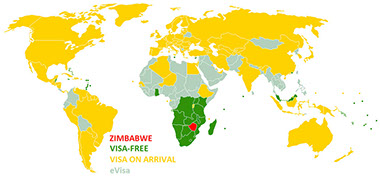
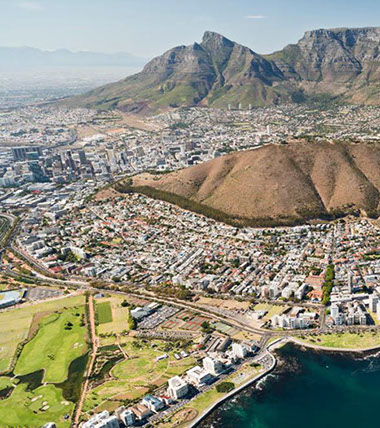
National Parks
Attractions (What to See)
Hundreds of thousands of visitors come to South Africa every year to see the country's many natural and cultural attractions. From wild elephants to stunning landscapes, cave paintings, colonial heritage and bustling townships, South Africa is an enchanting land of contradictions and great beauty. Some of the best ways visitors can explore South Africa's natural scenic and cultural experiences, apart from private run enterprises, are provided by state-developed entities such as the various Provincial Park Boards and National Nature Reserves.
- Wildlife; Zimbabwe is mostly Savannah, although the moist and mountainous eastern highlands support areas of tropical evergreen and hardwood forests. Much of the country is covered by miombo woodland, dominated by brachystegia species and others. Among the numerous flowers and shrubs are hibiscus, flame lily, snake lily, spider lily, leonotus, cassia, tree wisteria and dombeya. There are around 350 species of mammals that can be found in Zimbabwe. There are also many snakes and lizards, over 500 bird species, and 131 fish species.
- Great Zimbabwe Ruins; In the vicinity of Masvingo, the 3rd Zimbabwean city, Great Zimbabwe ruins are the remains of one of greatest African civilizations after the Pharaohs: the Kingdom of Great Zimbabwe dominated the area from present Zimbabwe, East of Botswana and South East of Mozambique in the late Iron Age (between 1100 and 1450 AD). From the impressive granite stone complex that was once built, the ruins span 1,800 acres (7 km2) and cover a radius of 100 to 200 miles (160 to 320 km)
- Cultural Heritage; Zimbabwe has many different cultures which may include beliefs and ceremonies, one of them being Shona, Zimbabwe's largest ethnic group. The Shona people have many sculptures and carvings which are made with the finest materials available.
Things to Do
- Bungee jumping at Victoria Falls; An incredible experience off the Victoria Falls bridge over the mighty Zambezi - 111 metres of pure adrenaline.
- Walk with the lions, swim with the elephants, ride a horse. and enjoy other game activities at Antelope Park near Gweru, between Harare and Bulawayo.
- An Authentic African Safari; Walking, canoeing or on a game drive in Hwange National Park or Mana Pools with African Bush Camps.
- Harare International Festival of Arts (HIFA); every year in Harare (end of April) with some extension in Bulawayo. Music, Theater, and other shows sponsored by foreign embassies, it features top international and local artists,and also brings in town a great artcraft market.
- Diving; The only site accessible to recreational divers is Mutoroshanga Ethel Mine, a flooded asbestos quarry 120 km by road from Harare. Good visibility and beautiful surroundings. You need technical cave-diving skills to venture into Chinhoyi Caves, 120 km from Harare. The caves are mostly water-filled, and are more than 120 m deep.
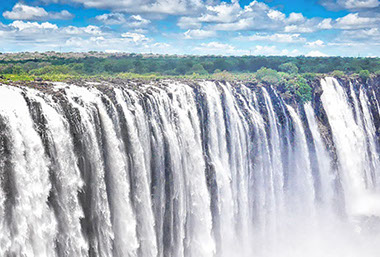
Where to Stay (Accommodation)
Zimbabwe has a great number of tourist facilities, and offers a variety of accommodation options, from international hotels to guest houses, lodges, backpacker hostels and safari camps for all budgets. If you are on a safari tour there are tented camps, chalets and camping sites in most of the safari areas.
Visit Zimbabwe! "A Place of Wonders" - Don't miss the Experience
Visit Africa is an African tourism brand of Architect Tourism SMC, that profiles every tourist destination, in every country, in Africa; Destinations, How to get there, Attractions, Things to do, How to get around, itinerary pricing and Where to stay, for an adventurous breathtaking and thrilling experience of tourism of Africa.
Visit Africa
Destinations
We are Social!
Search this Site!
About Africa
Visit Africa
Visit Uganda
Tanzania
Visit Kenya
Visit Egypt
Cities in Africa
Visit Morocco
Tour Itineraries



Visit South Africa
Visit Namibia
Visit Zimbabwe
Wildlife in Africa
Visit Africa Copyright © 2019 - Visit Africa is a Tourism Brand of Architect Tourism SMC Limited.
Architect Tourism SMC is an African tourism company, crafted to inspire and enable a breathtaking beautiful experience of Africa. Visit Africa is one of Architect Tourism SMC tourism brands. Visit Africa is inspired to craft innovative, fun and breathtaking tourism events, trips, excursions, getaways, safari, vacations, holiday, and tours experiences.
Vision: To inspire, craft, and enable a breathtaking beautiful experience of Africa.
Our Values: African, Oneness, Integrity, Client focused, Conservation focused, Innovative, Excellence, Simplicity.
Company Registration Number: 80020002986484
Company Tax ID: 1018106912

